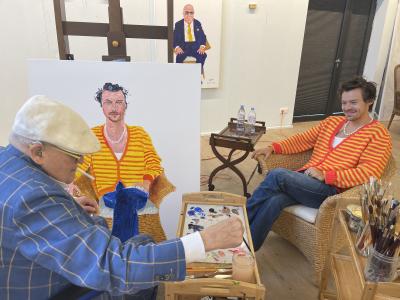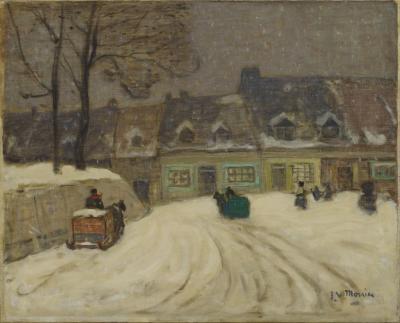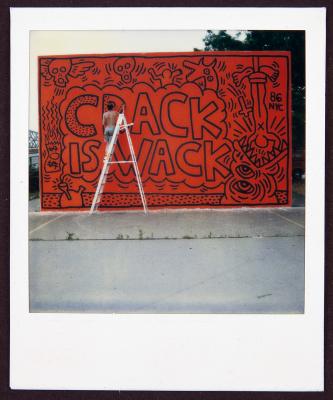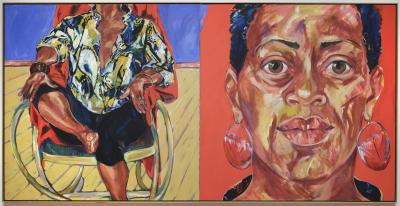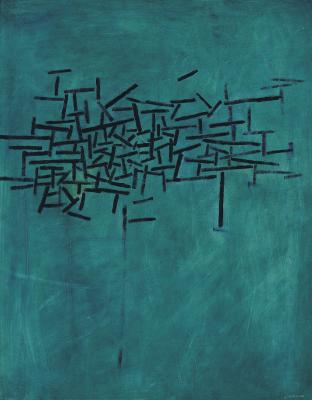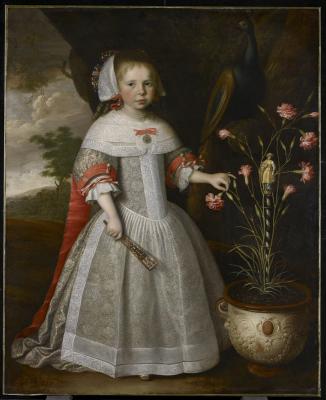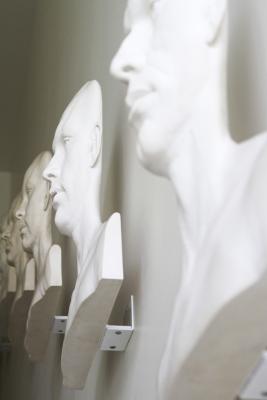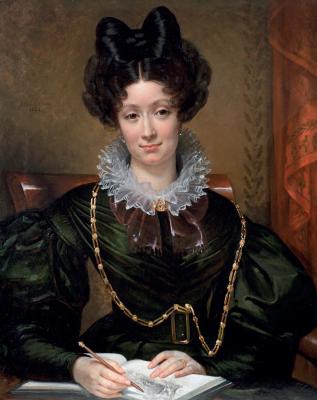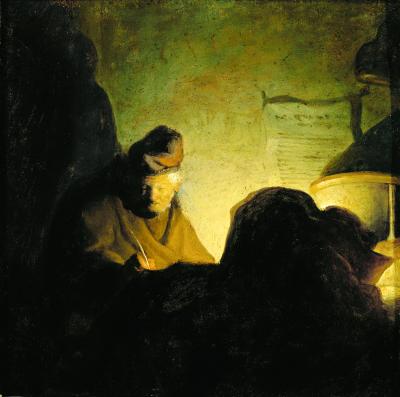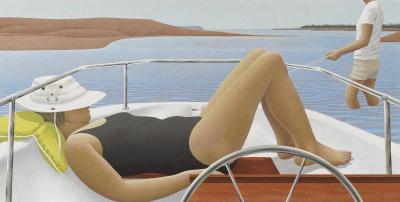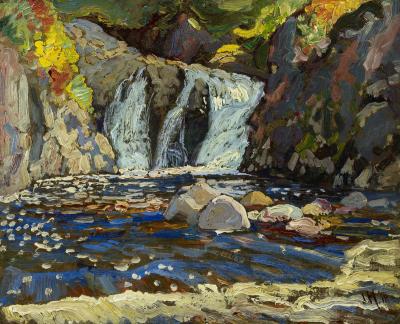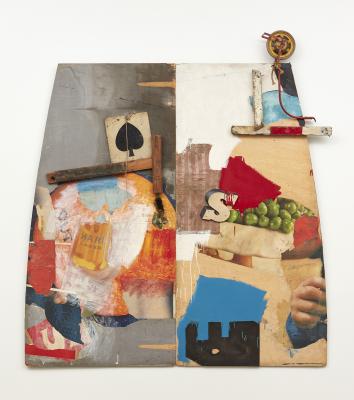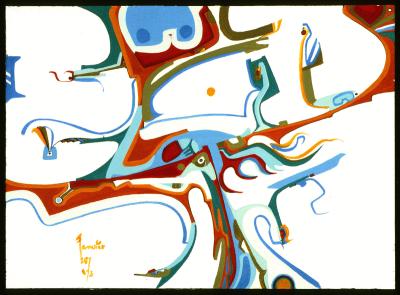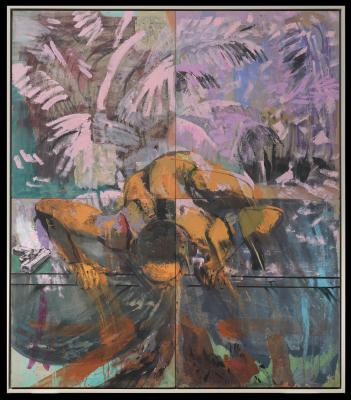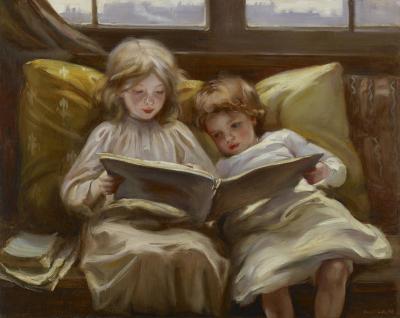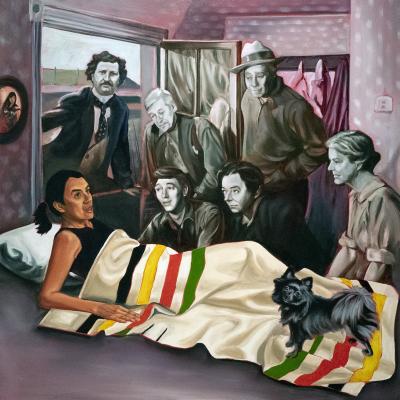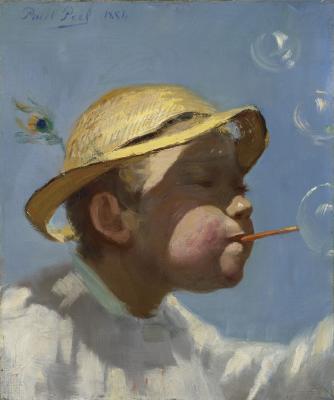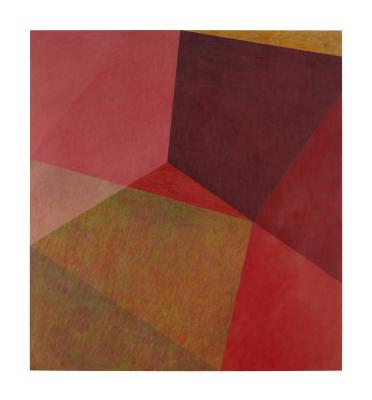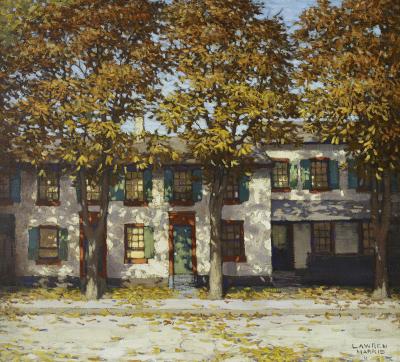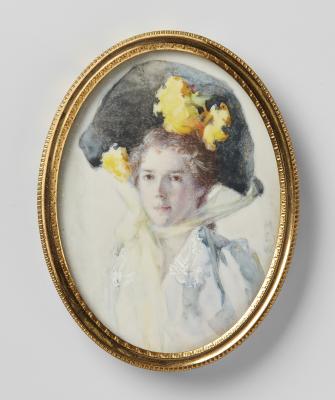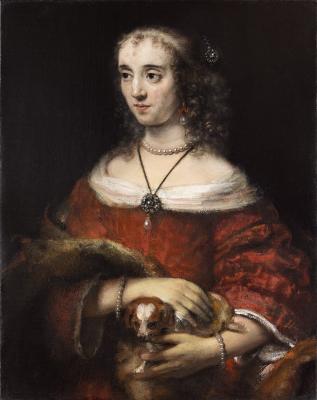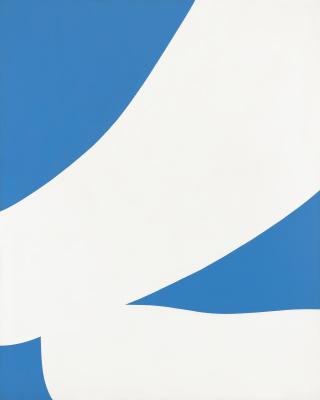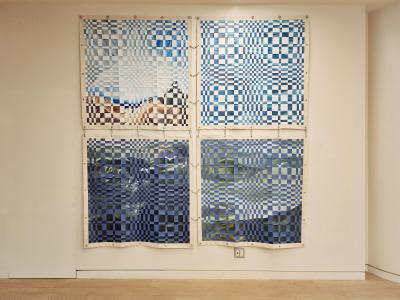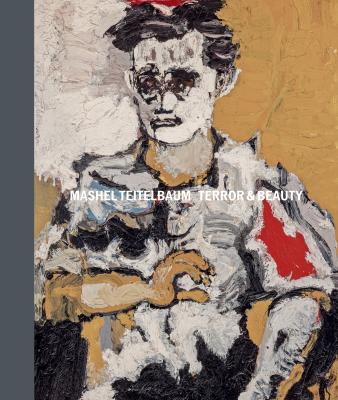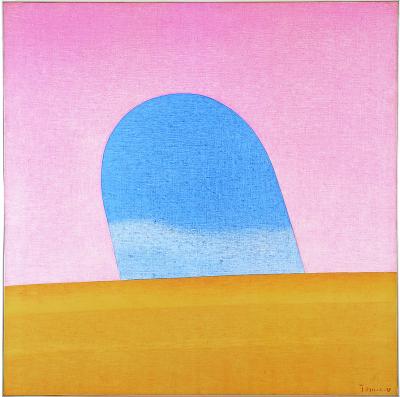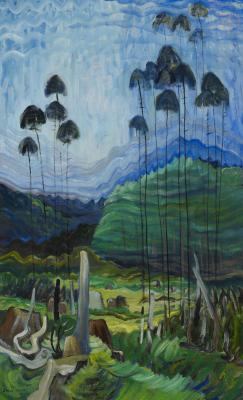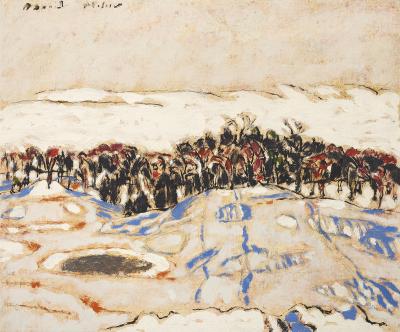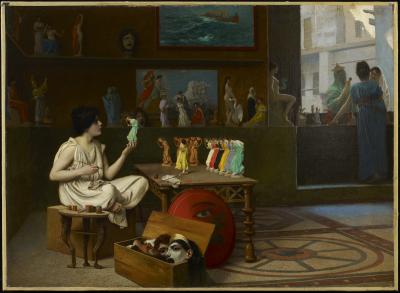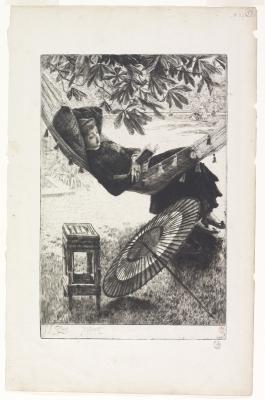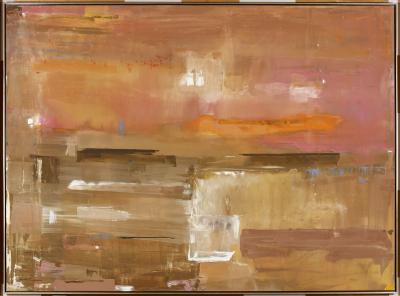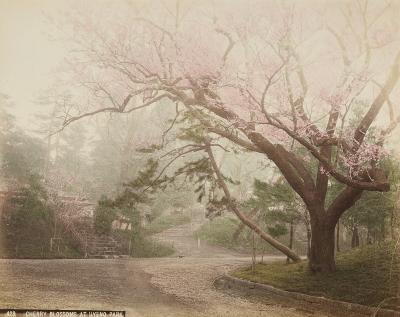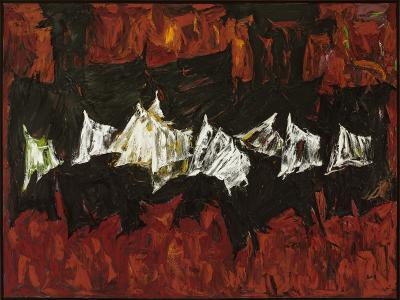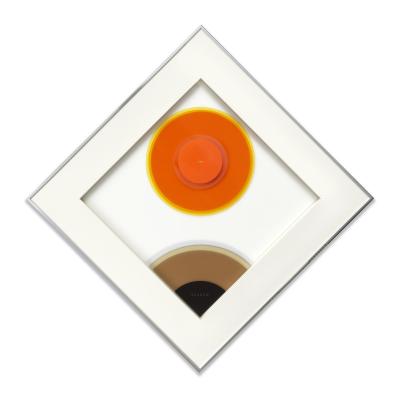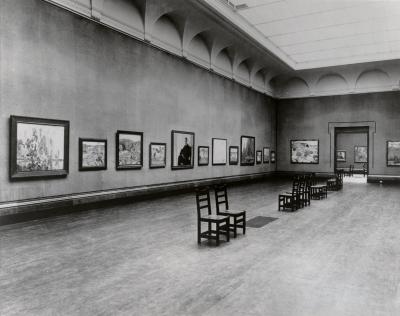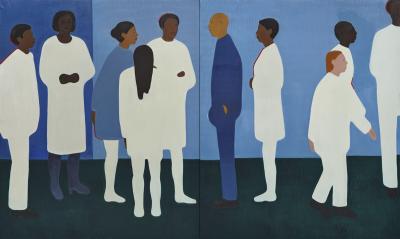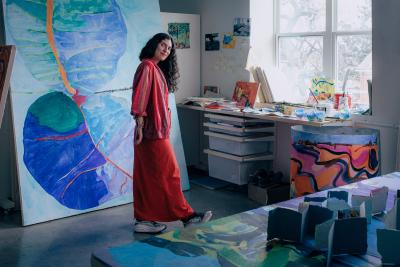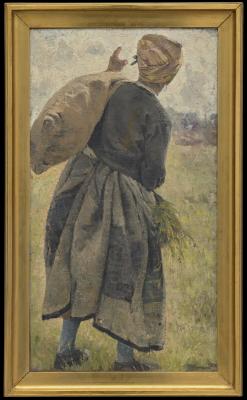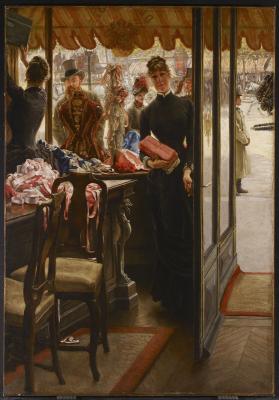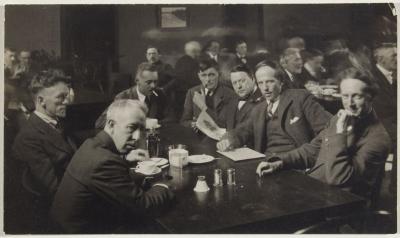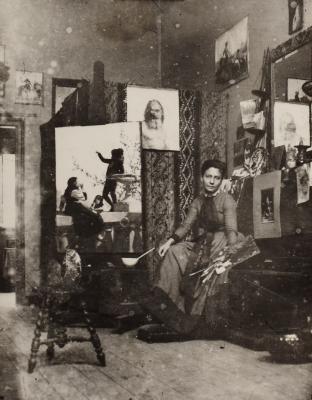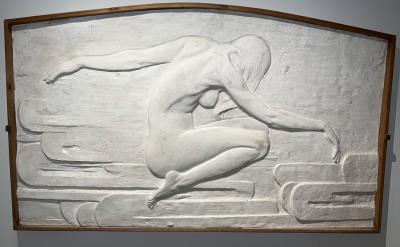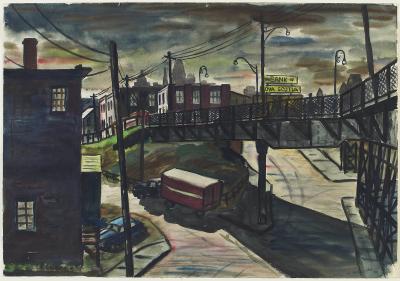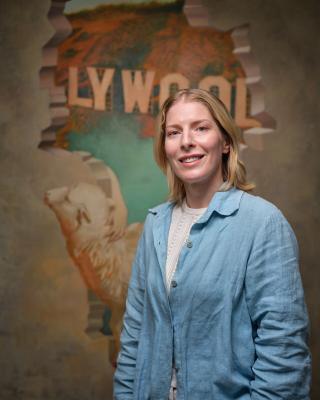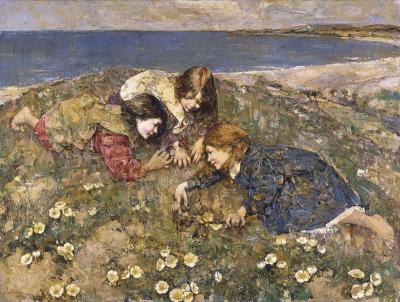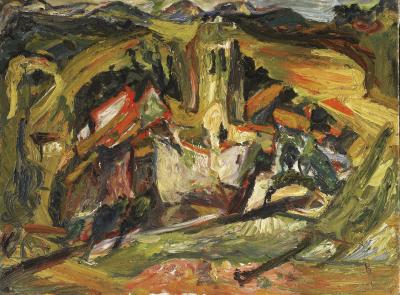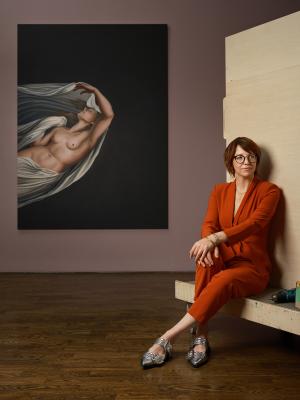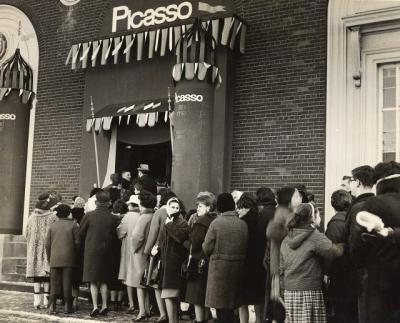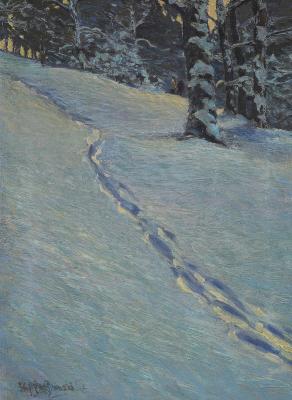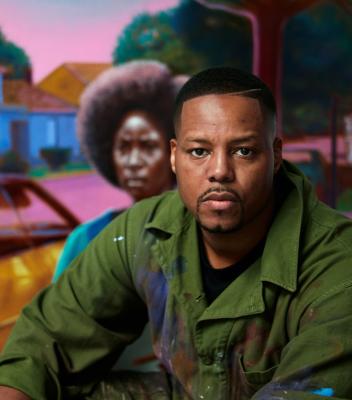Restoring Kathleen Munn
Science reveals the true colours and dynamism of one of Canada’s leading modernist painters
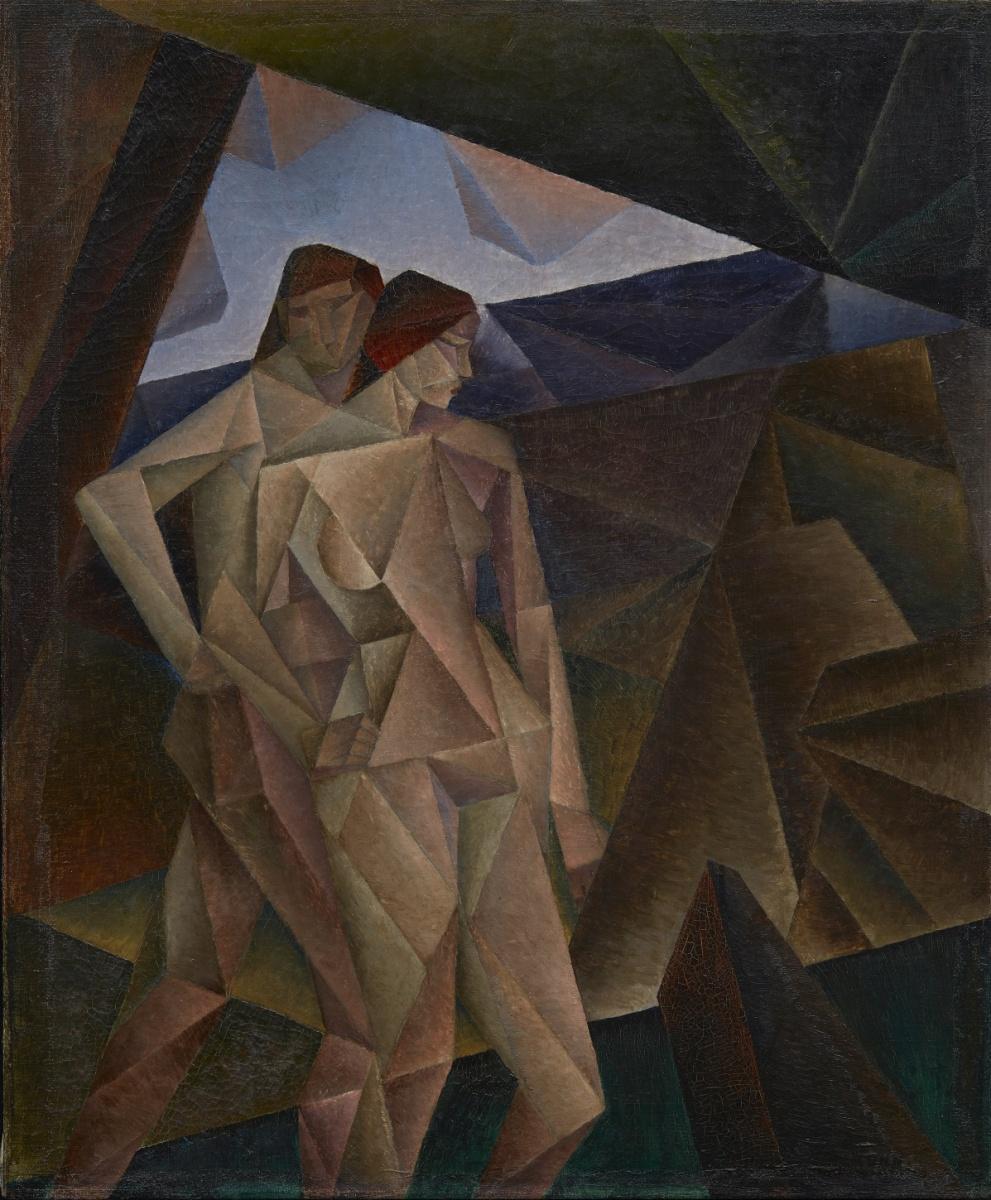
Kathleen Jean Munn. Untitled (Two Figures in a Landscape), c. 1925. Oil on canvas, 51.2 × 42.7 cm. Gift of William and Verna Richards, 2012. © Estate of Kathleen Munn 2012/98.
Among the first artists in Canada to experiment with abstraction, Kathleen Munn was active in Toronto in the 1920s and 1930s; she was considered by some as one of the most advanced, if confounding, artists of her time. Discouraged in part by the dominance of the Group of Seven and landscape painting in Canada, she stopped making art around 1939, and by the time of her death in 1974, she was relatively forgotten.
Yet, recent conservation work and research undertaken in partnership with the Canadian Conservation Institute have yielded significant new understandings of her techniques, methods and materials.
Stephanie Barnes, former AGO Koerner Conservation Fellow, and Georgiana Uhlyarik, AGO Fredrik S. Eaton Curator, Canadian Art, shared with us their efforts to reveal Munn's accomplishments.
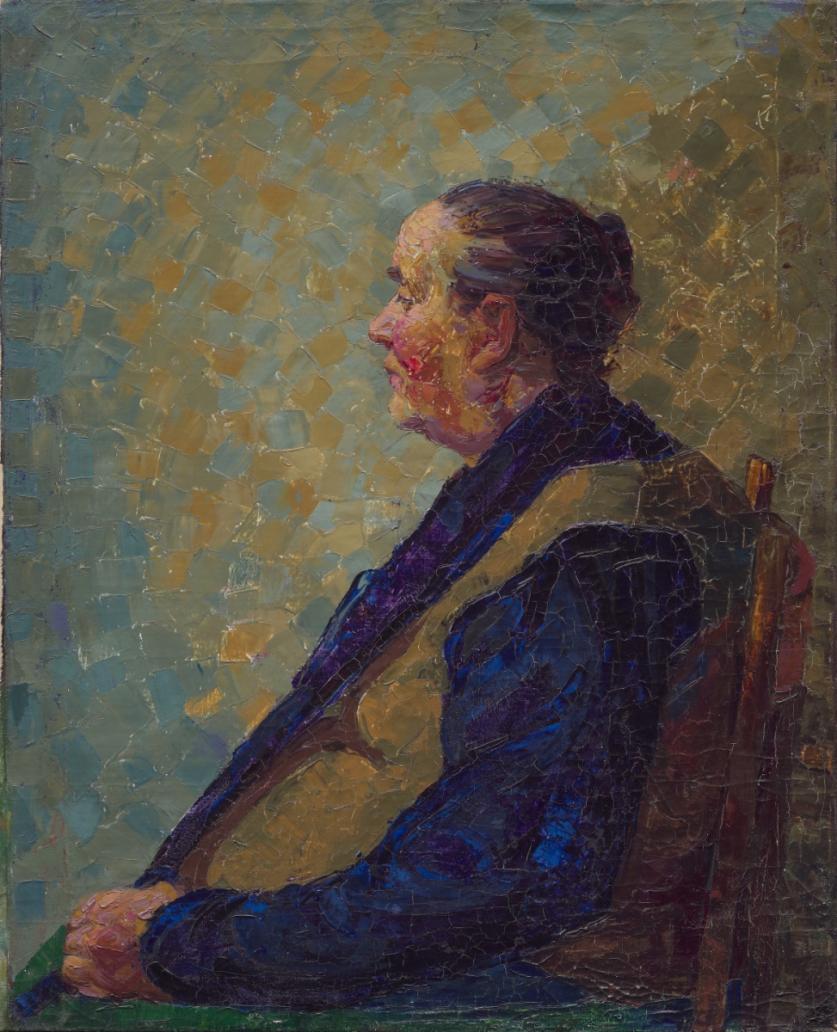
Kathleen Jean Munn. Untitled (Portrait of a Seated Woman), nd. Oil on canvas, Unframed: 74.6 × 61.1 × 1.9 cm Gift of Bernard and Sylvia Ostry, 2018. © Estate of Kathleen Munn 2019/2273.
Foyer: What is behind the resurgence of interest in Munn?
Uhlyarik: The AGO was the only gallery to purchase her art during her lifetime. In 1945, artist Bertram Brooker (1888–1955)—a Group of Seven associate and Munn’s friend—was invited by Martin Baldwin, the AGO curator, to approach Munn about acquiring one of her works. Brooker facilitated the purchase, and in Munn’s letter to the Gallery’s acquisition committee at the time, she offered two drawings from her Passion Series (1938), selected from “a few of those that I might care to be represented by.” These works—likely the last she ever completed—were neglected for decades as the tastes and interests of the Gallery curators shifted and changed. The presence of these works in the AGO Collection allowed for the possibility of Munn’s rediscovery.
Since the 1990s, the AGO has become a centre for the art and study of Munn, actively collecting her work and inspiring the next generation of curators and scholars with her archives. Ongoing research and publications have revealed Munn to be an independent, focused and highly original artist who never compromised her passion for her artistic project.
What was involved in restoring her 1925 painting, Untitled (Two Figures in a Landscape)?
Barnes: The painting entered the AGO Collection in 2012 in a deteriorated state and in 2018, a year-long project was started to examine and restore it. I studied and treated the painting under the supervision of Maria Sullivan, the head of Conservation at the AGO. The surface was disrupted and it was no longer possible to see Munn’s original use of colour, or the subtleties of her composition and paint application.
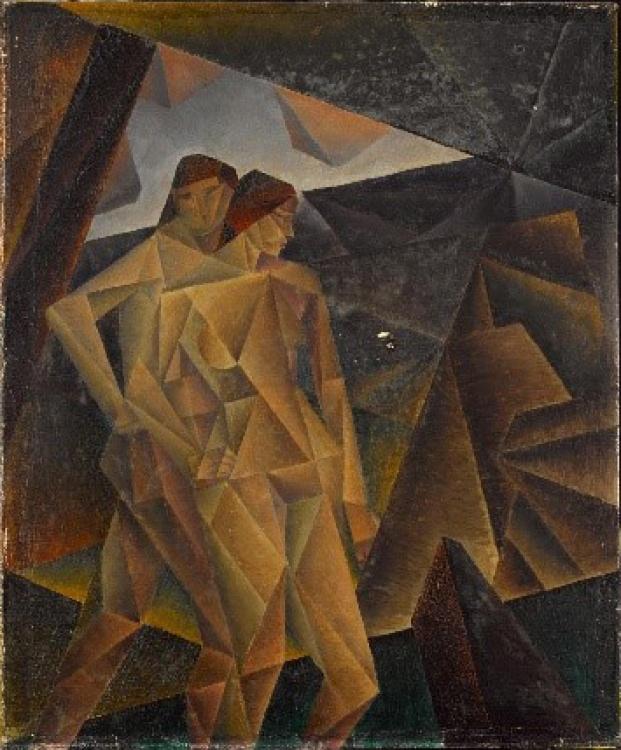
(Pre-restoration) Kathleen Jean Munn. Untitled (Two Figures in a Landscape), c. 1925. Oil on canvas, 51.2 × 42.7 cm. Gift of William and Verna Richards, 2012. © Estate of Kathleen Munn 2012/98.
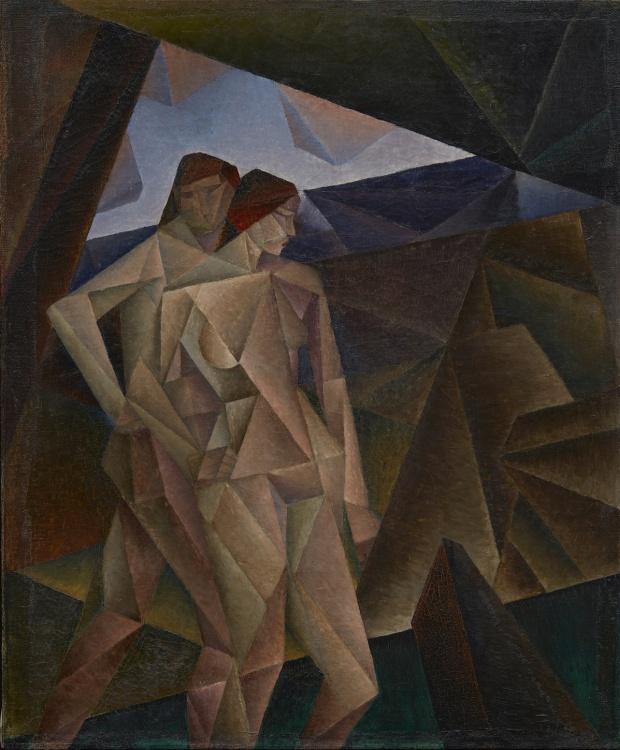
(Post-restoration) Kathleen Jean Munn. Untitled (Two Figures in a Landscape), c. 1925. Oil on canvas, 51.2 × 42.7 cm. Gift of William and Verna Richards, 2012. © Estate of Kathleen Munn 2012/9.
Barnes: Reflected infrared photography revealed detailed pencil underdrawings, a complex web of grids and triangles delineating the mathematical underpinnings of the composition. Two related drawings and some unfinished canvases in the Munn archives attest to her meticulous planning and her fascination with the principles of dynamic symmetry.
Uhlyarik: As Munn rarely dated her works, the research supported a more accurate dating of the painting. This cumulative research enabled the painting to be restored to its original brilliance, nearly a century after it was painted, revealing the luminous sky with earthly pink shapes, the deep blue of the water, and the fine details of her brushstrokes in the bejewelled facets of the two figures.
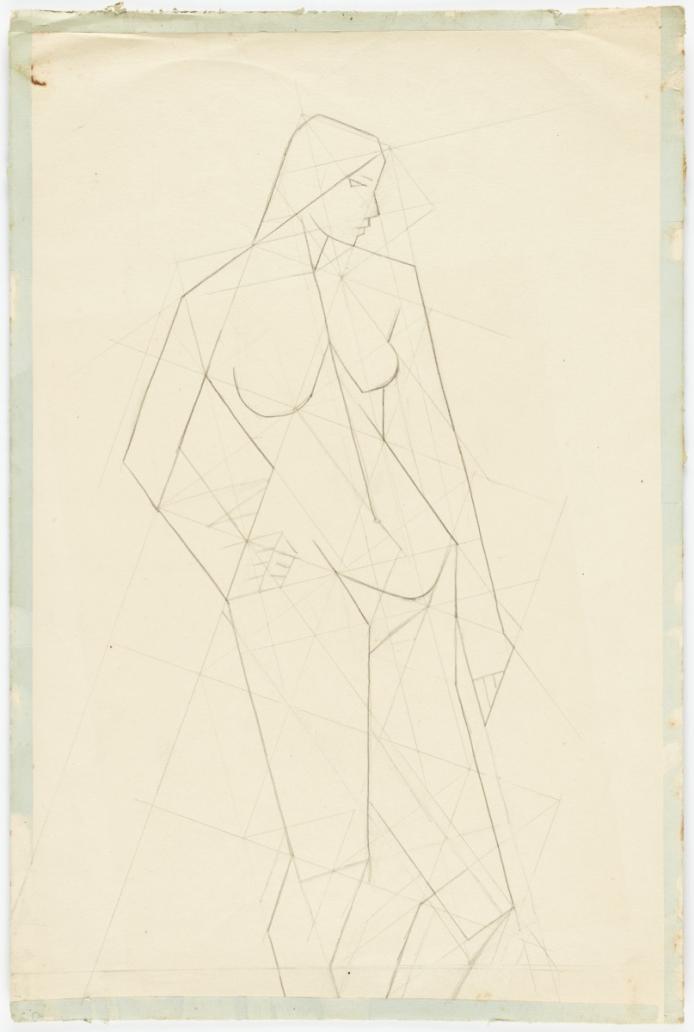
Kathleen Jean Munn. Untitled (female nude, with geometric lines), c.1920-1925. , Overall: 45.8 × 30.5 cm. Gift of the Estate of Kathleen Munn, 2005. © Estate of Kathleen Munn LA.KMF.S2.f9.10
How does the conservation work change how we understand this painting?
Uhlyarik: It’s no longer muted. Munn’s composition is active and dynamic— it’s an exceptional and unique painting that profoundly challenges conventional notions of modern art in Canada and restores Munn’s deserved place in our art history.
Paintings by Munn, including Untitled (Two Figures in a Landscape), are on view now until July 27, 2025 at the AGO as part of Reality & Reverie: Canadian and European Painting Beyond Impressionism. The exhibition is on view on Level 1.
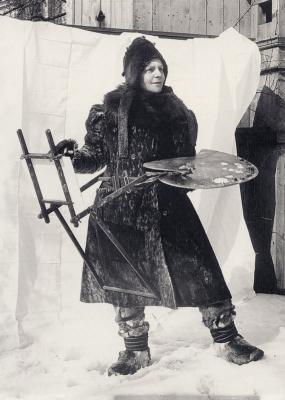
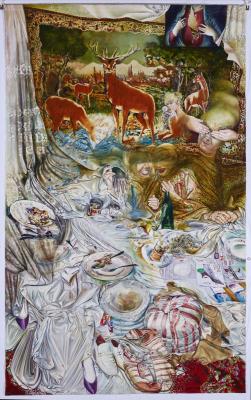
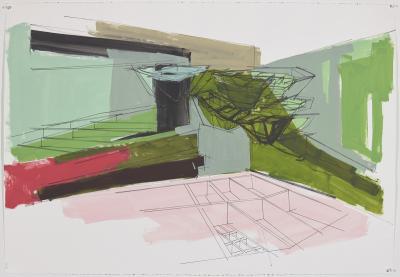

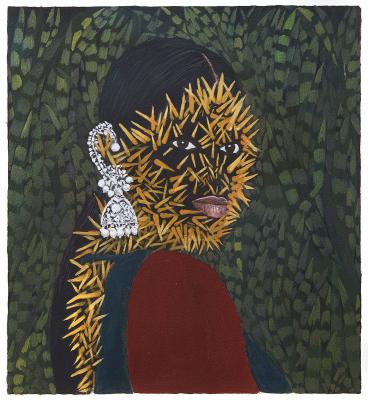

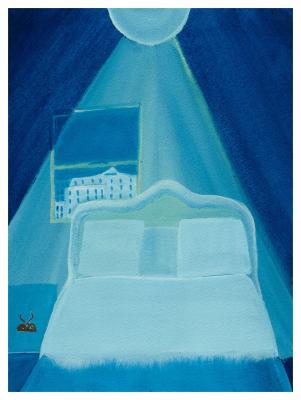
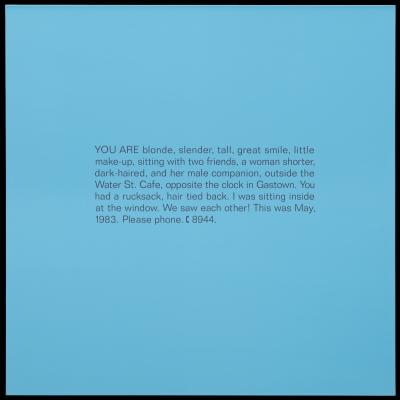
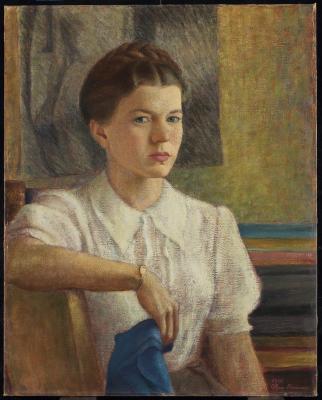
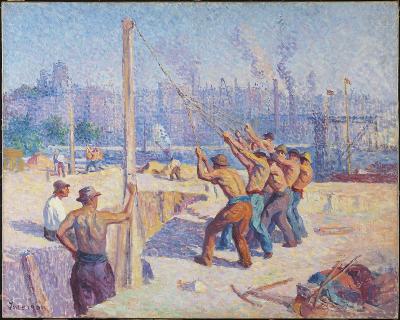
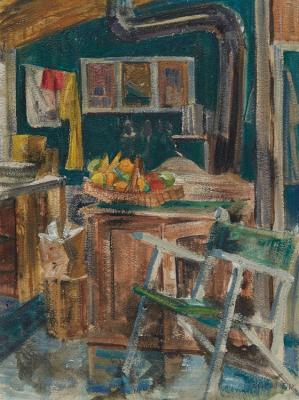
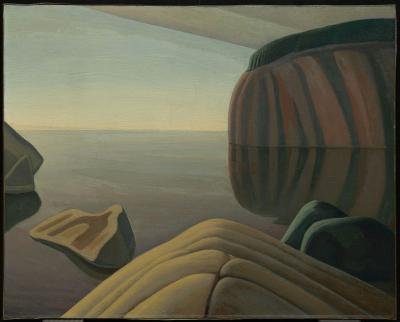
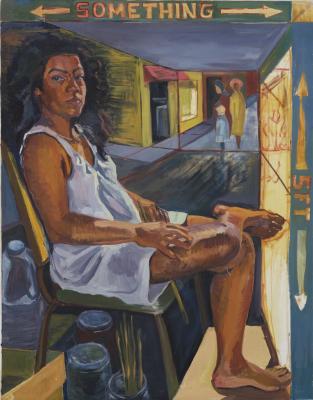
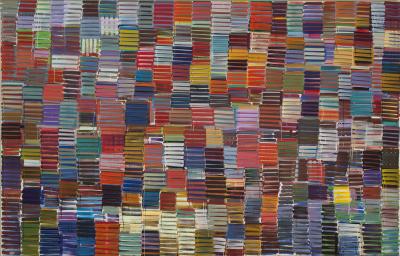

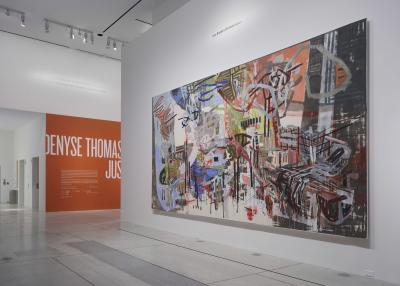
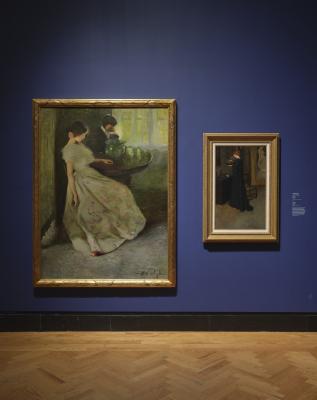
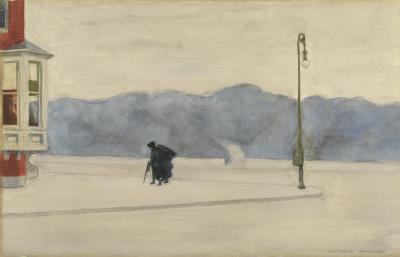
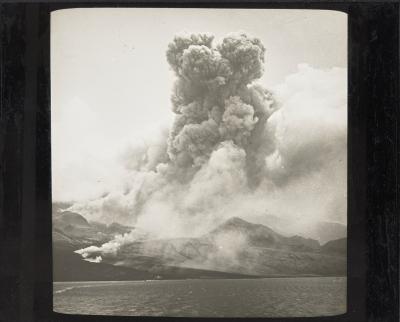
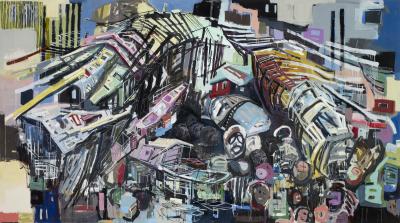
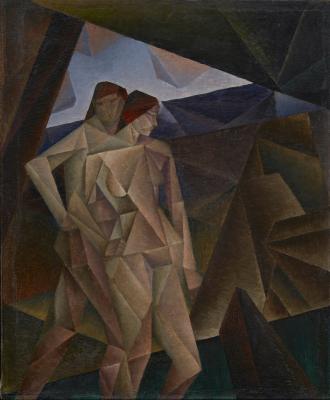
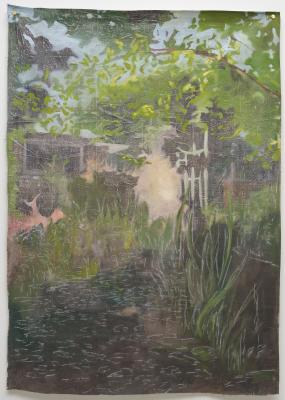
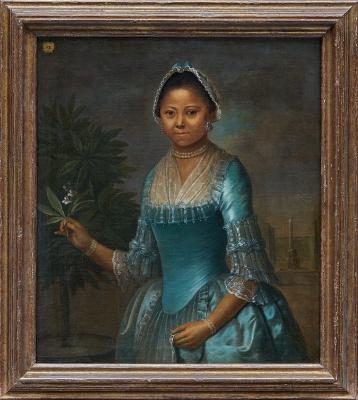

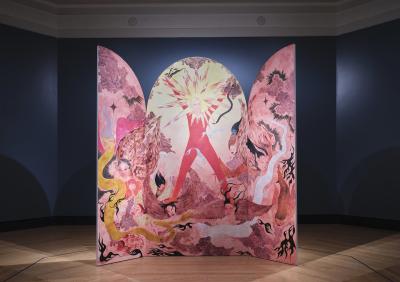
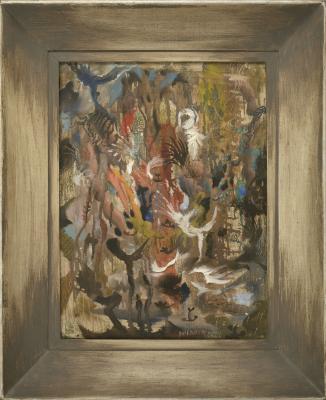
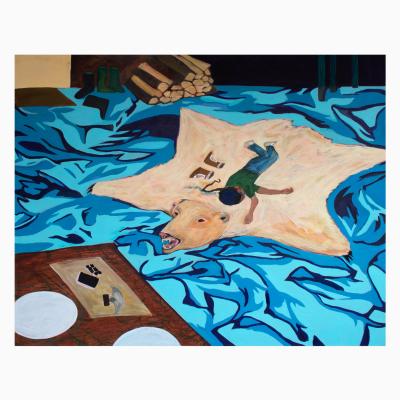
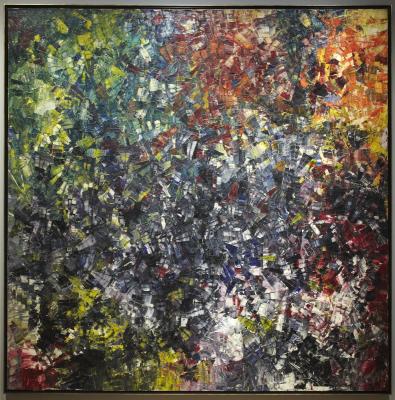
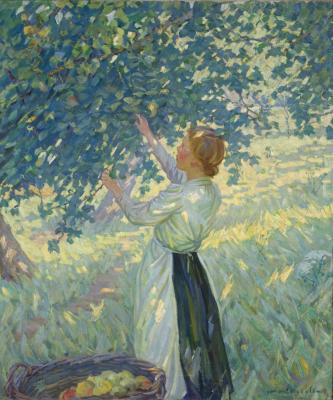
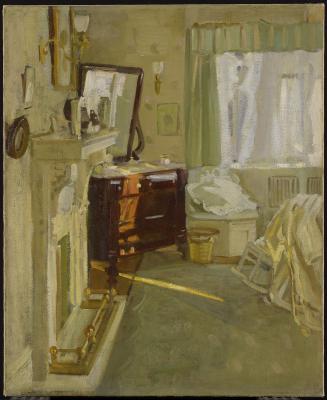
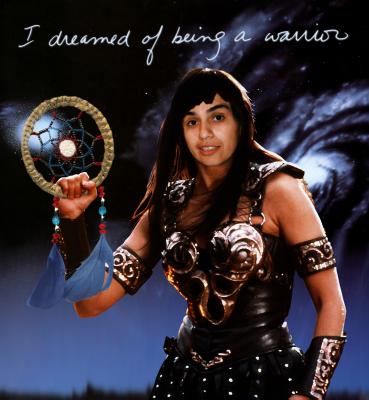
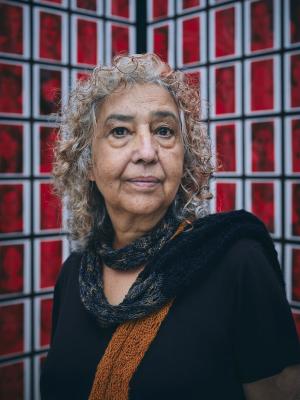
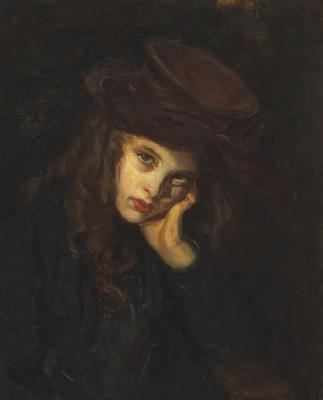
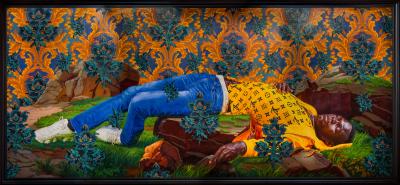

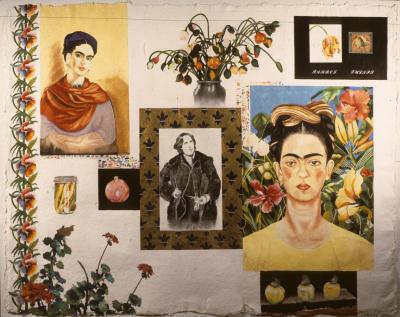
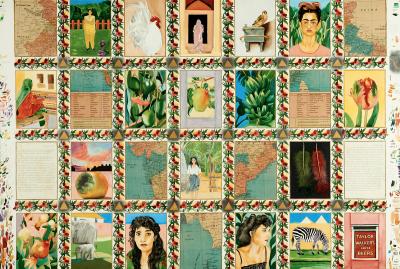
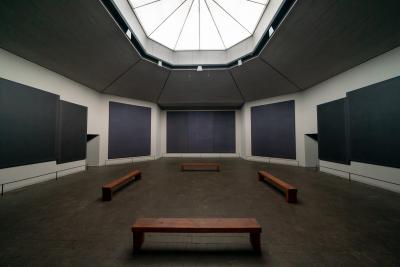
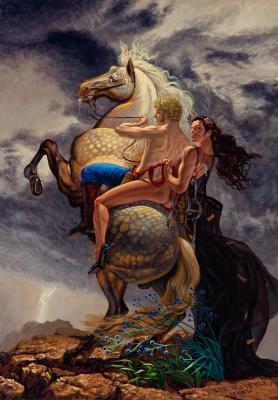
![Keith Haring in a Top Hat [Self-Portrait], (1989)](/sites/default/files/styles/image_small/public/2023-11/KHA-1626_representation_19435_original-Web%20and%20Standard%20PowerPoint.jpg?itok=MJgd2FZP)
